Gasgoo Awards 2023 attracts numerous applications from automotive chip segment
Gasgoo, a global leading automotive industry information service platform, has kicked off the Gasgoo Awards 2023 program. For the Top 100 Players of China's New Automotive Supply Chain, the program will cover ten core segments, namely autonomous driving, smart cockpit, software, automotive chip, artificial intelligence, powertrain electrification, intelligent chassis, body and exterior & interior, low-carbon new materials, as well as thermal management.
In the automotive chip segment, the Gasgoo Awards 2023 have seen a fierce competition with multiple companies applying for the Top 100 Players of China's New Automotive Supply Chain. Let’s take a closer look at the applicants.
GosuncnWelink Technology Co., Ltd.
Description
The GM557A product is a Automotive grade wireless communication module supporting LTE CAT 4. It delivers maximally 50Mbps uplink and 150Mbps downlink data rates. It can also be fully backward compatible with existing 3G and 2G networks. The module supports diversity receiving so as to improve the communication quality and reliability of wireless connection through the main diversity dual antenna. The module provides a variety of network protocols (PAP/CHAP/TCP/UDP) and a variety of functions (GNSS, Remote wakeup, SMS, WelinkOpen™) and so on, these protocols and functions make it be used in many IoV (Internet of Vehicles) application scenarios. This series module is produced and designed according to the requirements of IATF 16949:2016, and conforms to the quality control procedure such as APQP and PPAP.GM557A works within wide temperature range, has good EMC characteristics and excellent mechanical and reliability. It is suitable for vehicle application.
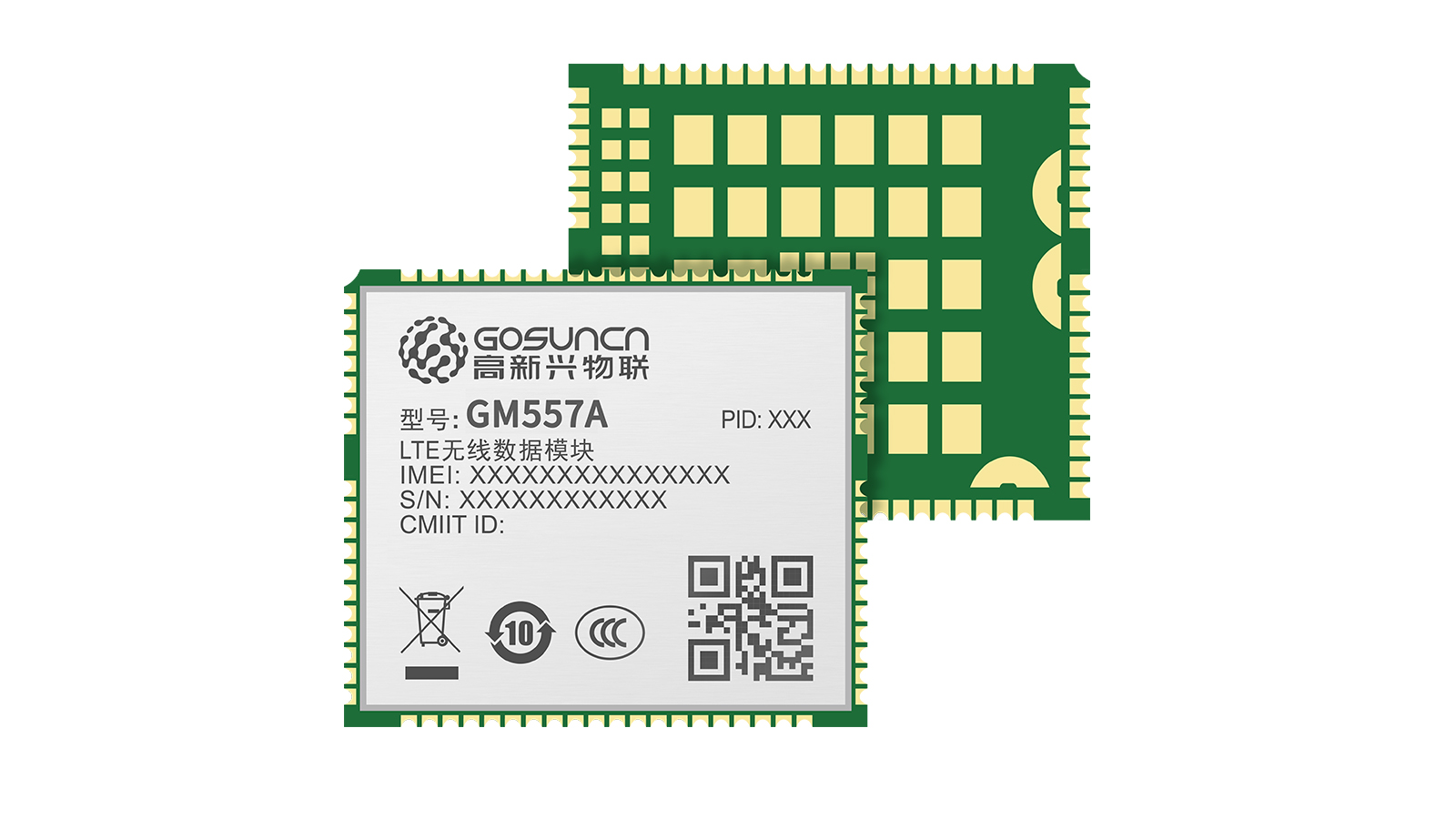
Unique advantages
The GM557A module is developed based on the latest domestic 7520V3V platform and is the most mature domestic car module in the industry. It can fully meet customers' requirements for localization of key components while also having cost advantages. The software and hardware packaging design of the module adopts industry mainstream standards, fully reducing the workload of Tier1 compatible replacement.
Application
4G TBOX/4G TCAM/4G OBU/4G IVI, etc.
Prospect
Intelligent and networked vehicles are the major trends in the development of the automotive industry. With the increasing installation rate of T-BOX in front of vehicles, 4G vehicle communication modules will also become key components as standard equipment for vehicles. The market demand is huge and the market prospects are optimistic.
Qualcomm
Product: Snapdragon Ride Flex SoC
Description
Qualcomm announced the Snapdragon Ride Flex SoC in January 2023. The Snapdragon Ride Flex SoC is engineered to support mixed-criticality workloads across heterogenous compute resources, allowing for the digital cockpit, ADAS and AD functions to co-exist on a single SoC. Designed to meet the highest level of automotive safety, the Snapdragon Ride Flex SoC enables a hardware architecture to support isolation, freedom from interference, and quality-of-service (QoS) for specific ADAS functions and comes equipped with a dedicated Automotive Safety Integrity Level D (ASIL-D) safety island. Furthermore, the Flex SoC pre-integrates a software platform that supports multi-operating system operating concurrently, hypervisor enablement with isolated virtual machines, and real-time operating system (OS) with an Automotive Open System Architecture (AUTOSAR) to meet the mixed criticality workload requirements for driver assistance safety systems, digital reconfigurable clusters, infotainment systems, driver monitoring systems (DMS), and park-assist systems.
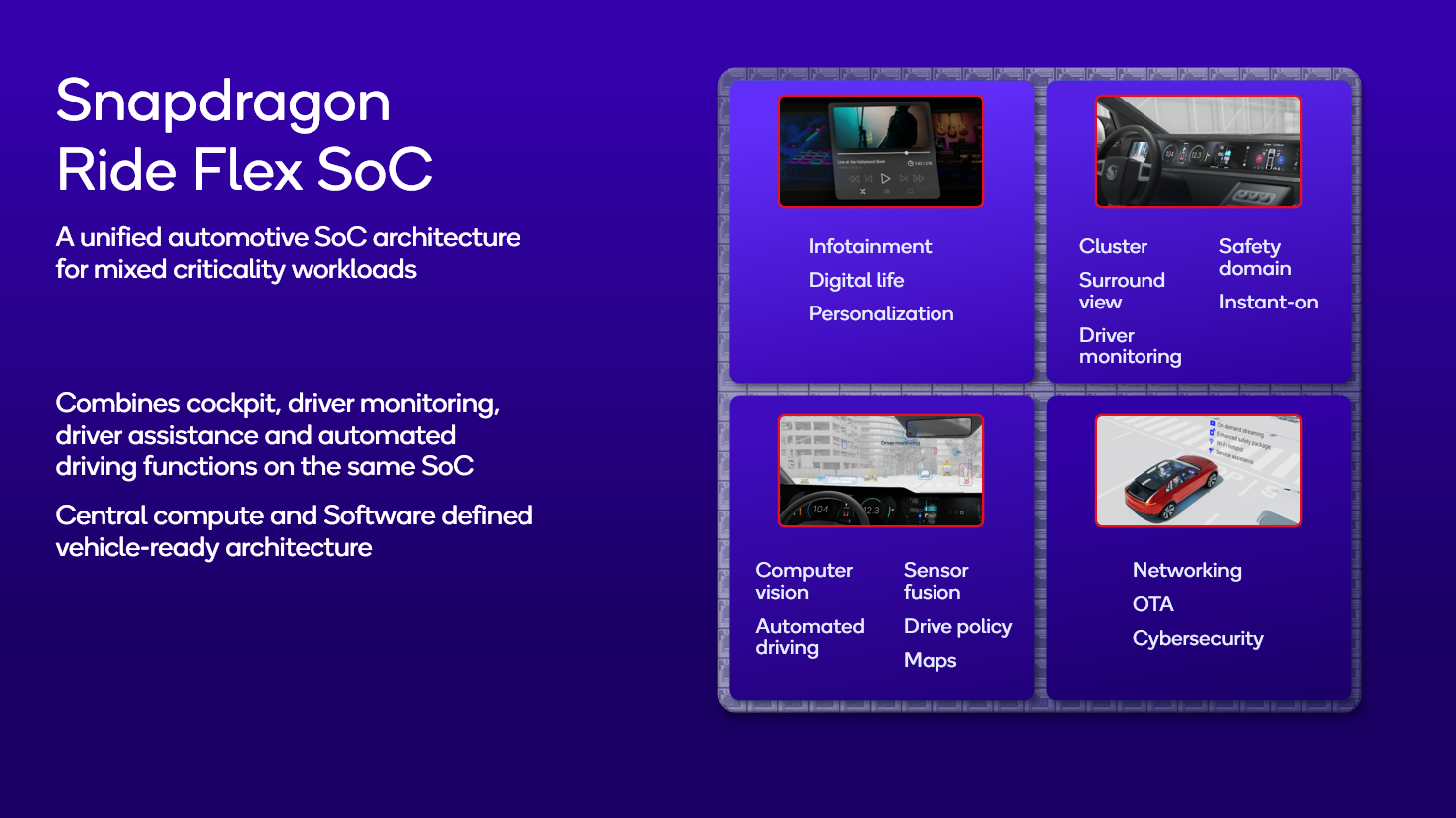
Unique advantages
Built on the company’s continued success in developing open, scalable, high-performance, and power-efficient automotive solutions, the Snapdragon Ride Flex SoC family is compatible with the broader portfolio of SoCs within the Snapdragon Digital Chassis Platform. The Flex SoC is also designed to be an ideal in-vehicle central-compute platform to power the next-generation Software Defined Vehicle (SDV) solutions by providing best-in-class high performance, heterogenous safe compute with the ability to execute flexible mixed critical cloud-native workloads. The in-vehicle compute is complemented by a rich offering of platform software capable of being deployed on a containerized infrastructure. The Flex SoC is supported by a cloud-native automotive software development workflow which includes support for virtual platform simulation that can be integrated as part of in-cloud development operations (DevOps) and machine learning operations (MLOps) infrastructure. Base on the following advantages, the Snapdragon Ride Flex SoC is designed to be the ideal in-vehicle central-compute solution that supports the next-generation SDV solutions: In-Car infrastructure Mixed Critical Heterogenous Centralized Compute Platform: Snapdragon Ride Flex SoC provides an ideal mix of compute and heterogenous accelerator engines required to meet the needs of next-generation SDV workloads. It provides flexibility to host multiple mixed critical workloads on the same platform, enabling the ability to consolidate various domain controllers performing IVI, ADAS/AD compute onto a single platform. In addition to the typical compute features, there are specific hardware features that Flex SoC facilitates to support spatial and temporal isolation that are crucial for supporting a functionally safe system. Base Platform Software Supporting Mixed Criticality: To complement the powerful hardware features, Snapdragon Ride Flex SoC supports a rich base platform stack. On the application processor, the Flex SoC supports safe hypervisor which provides spatial isolation between multiple mixed critical domains with support for rich base operating systems like Linux, Android and QNX. Additionally, Qualcomm is working on providing the support for specific hardware features that may support mixed criticality across the base platform software stack facilitating necessary QoS control interfaces for higher level middleware and cloud-native infrastructure to leverage. Automotive Cloud-Native Container Infrastructure: On top of the base platform software that enables a cloud-native workflow, Qualcomm plans to support in-vehicle mixed critical cloud-native containers and orchestrator infrastructure working closely with the ecosystem. This capability will extend the flexibility of Snapdragon Ride Flex SoC to execute concurrent mixed critical workload to the cloud-native design paradigm and one of the cornerstones to incrementally bring the SDV vision to reality. Service Oriented Communications Middleware: With the base platform software and automotive cloud-native container infrastructure in place, the other most important software component is a service-oriented communication middleware to enable a standard-based high performance low latency inter-process and inter-node communication between containers running in a single or multiple compute node. Flex SoC platform supports SOME/IP and DDS as the two most used communication middleware in automotive with extension to leverage mixed critical features in Flex SoC. Heterogenous Compute/AI Libraries: To complement the solid platform software and hardware infrastructure — to allow the automotive software developers to write software making the best use of Snapdragon Ride Flex SoC capabilities — Qualcomm provides multiple safety certifiable libraries like AI SDK, that can be used to write application on bare metal or in containerized environments. In-Cloud infrastructure Virtual Platforms: As part of the Snapdragon Ride Flex SoC offering, Qualcomm is supporting virtual platforms with different levels that are getting integrated as part of the cloud-native DevOps and MLOps infrastructure of some of the leading OEMs. As part of its expanding automotive virtual platform portfolio, Qualcomm is also working on adding advanced capabilities, allowing automotive developers to quicky verify the KPIs of their AI models developed for Flex SoC when new in-car or synthetic sensor data becomes available, thus contributing to increasing the developer efficiency multi-folds. DevOps/MLOps: Qualcomm is working with multiple OEMs to support Snapdragon Ride Flex SoC-based development infrastructure as part of their DevOps/MLOps flow with intercepts into the Snapdragon virtual platforms. One of the key objectives is to promote the Flex SoC and Snapdragon Digital Chassis as a complete SDV product portfolio to provide the optimal in-cloud infrastructure to provide best-in-class developer effectiveness.
Application
The Snapdragon Ride Flex SoC is engineered to support mixed-criticality workloads across heterogenous compute resources, allowing for the digital cockpit, ADAS and AD functions to co-exist on a single SoC. The Flex SoC is optimized for performance scalability, ranging from entry-level to premium, high-end central-compute systems, providing the flexibility to automakers to choose the appropriate performance point for their vehicle tiers. With this capability, automakers are able to realize complex cockpit use-cases, such as integrated instrument clusters with immersive high-end graphics, infotainment and gaming displays, and rear seat entertainment screens, concurrently with latency-critical premium audio experience and the pre-integrated Snapdragon Ride Vision stack. These performance requirements can be realized by utilizing hardware and software co-design. The Flex SoC is pre-integrated with the industry-proven Snapdragon Ride Vision stack, which enables highly scalable and safe driver assistance and automated driving experiences using a front camera to meet regulatory requirements, and multi-modal sensors (multiple cameras, radars, lidars and maps) for enhanced perception that creates an environmental model around the vehicle feeding into vehicle control algorithms. The Snapdragon Ride Vision stack meets the New Car Assessment Program (NCAP) requirements and Europe’s General Safety Regulations (GSR) while scaling up to higher levels of autonomy.
Prospect
With the rise of electric vehicles, change in electrical/electronic (E/E) architecture and explosive growth in software, the automotive industry is experiencing a disruptive transformation and the concept of Software-Defined-Vehicle (SDV) has also come into being. The Snapdragon Ride Flex SoC is an ideal central-compute solution that supports the next-generation SDV solutions for OEMs and across the SDV ecosystem. Qualcomm continues to remain at the forefront of automotive compute innovation, and as the industry enters the era of Software Defined Vehicles, the Snapdragon Ride Flex SoC family defines a new setpoint for high-performance power-optimized mixed-criticality architectures. The Snapdragon Ride Flex SoC-enabled SDV development and deployment infrastructure supports shift-left automotive system development while providing infrastructure to develop and deploy new features across the lifetime of the vehicle. Qualcomm is making it easier and more cost effective for automakers and Tier-1s to embrace the transition to an integrated, open, and scalable architecture across all vehicle tiers with its pre-integrated suite of hardware, software, and ADAS/AD stack solutions while enabling the ecosystem to differentiate on Qualcomm’s platforms with an accelerated time-to-market advantage. Besides, this allows OEMs to create new post-sale service-based business models while providing end customers with enhanced user experiences. The first Snapdragon Ride Flex SoC is sampling now for an expected start of production beginning in 2024.
Calterah Semiconductor Technology (Shanghai) Co., Ltd.
Product: Calterah Alps-Pro CAL77S344-AE mmWave radar SoC
Description
As the new auto-grade 4T4R 77 GHz mmWave radar SoC based on Calterah’s Alps platform, Alps-Pro (CAL77S344-AE) integrates a complete radar system that includes an FMCW front-end transceiver operating in the 76–81 GHz frequency band, a Baseband Accelerator (BBA), a multi-core CPU, etc., boasting excellent performance of the analog front end and exceptionally high computing power for radar signal processing. Therefore, Alps-Pro perfectly fulfills the requirements of corner radar and forward-looking radar in L2+ autonomous driving.

Unique advantages
1. Powerful Performance: Based on Calterah’s Alps platform, Alps-Pro boasts higher accuracy of the phase shifter, a greater RF link budget, and greater channel-to-channel isolation in the RF analog front-end, achieving an industry-leading performance and currently the lowest system power consumption. The BBA supports a more efficient DDM-MIMO signal processing flow and integrates powerful engines such as CFAR with coherent combination, Spatial Variant Apodization (SVA), etc. The Alps-Pro device also provides a 100 Mbps Ethernet interface that supports outputting a large amount of point cloud information. 2. Optimal Cost-Efficiency: Based on the standard CMOS process technology, Alps-Pro features low cost and scalability for mass production and boasts currently the smallest die size among products of the same specifications. 3. Safety and Robustness: Alps-Pro meets the requirements of AEC-Q100 qualification and ISO 26262 ASIL-B standard. To ensure cybersecurity, it provides a Hardware Security Module (HSM) supporting various symmetric and asymmetric encryption and decryption algorithms, HASH algorithms, and true random number generator. Moreover, it supports excellent functions such as interference detection in radar signals and out-of-band spur attenuation, capable of meeting the requirements of various new regulations. 4. Easy Development: Apart from integrating a whole radar system, Alps-Pro comes with development software compliant with ISO 26262 ASIL-B and ASPICE standards and supports debugging of various functions, which can simplify user development and shorten the time to market substantially.
Application
Developed based on Alps-Pro, corner radar and forward-looking radar support detection ranges of 180 m and 240 m and resolution of 4° and 3°, respectively, with ±0.1° azimuth accuracy, perfectly meeting the requirements of L2+ autonomous driving. mmWave radar is widely applied in Advanced Driver Assistance Systems (ADAS), featuring long detection distances and strong penetrability of signals since they have low atmospheric attenuation and loss in transmission, and thus it can offset the drawbacks of cameras and LiDAR.
Prospect
On top of traditional radar functions, 4D mmWave radar is capable of height measurement, enabling object detection with improved accuracy and resolution and output of more point cloud information. As the penetration rate of smart driving in new energy vehicles (NEVs) continues to rise, the cost-efficient advantage of mmWave radar becomes increasingly prominent. Alps-Pro will help to bring down the cost of mmWave radar modules, making autonomous driving more accessible to everyone. This radar technology will better serve L3/L3+ autonomous driving with its excellent detection performance in the future.
Valens Semiconductor
Product: Valens VA7000 chipset family
Description
The Valens VA7000 chip is a cutting-edge semiconductor solution designed to address the growing demand for high-speed data transmission and reliable connectivity in various industries. This advanced chip offers a wide range of features and capabilities, making it a versatile and efficient solution for numerous applications. Key features of the Valens VA7000 chip include: 1. High-Speed Data Transmission: The chip supports ultra-high-speed data transmission, allowing for seamless and real-time communication of large volumes of data. This capability is essential for industries such as automotive, professional audiovisual, industrial automation, and smart home, where the rapid exchange of data is critical. 2. Multiple High-Definition Streams: The VA7000 chip can handle multiple high-definition video and audio streams simultaneously, enabling enhanced multimedia experiences in applications like AV integration, smart home entertainment, and virtual reality. 3. Low Latency: With minimal latency in data transmission, the chip ensures smooth and responsive performance in time-sensitive applications like autonomous driving, industrial control systems, and gaming. 4. Robust Connectivity: The VA7000 chip provides robust connectivity options, supporting a variety of wired and wireless communication protocols. This enables seamless integration with existing infrastructure and ensures compatibility with different devices and systems. 5. Scalable Architecture: The chip's architecture is designed for scalability, allowing it to be customized and optimized for specific industry requirements. This flexibility makes it adaptable to a wide range of applications, from small-scale deployments to large-scale enterprise solutions. 6. Energy Efficiency: The VA7000 chip is engineered for energy efficiency, ensuring optimal power consumption while delivering high performance. This feature is particularly valuable in applications where power efficiency is crucial, such as battery-powered devices or IoT implementations. 7. Reliability and Security: The chip incorporates robust security features to safeguard data integrity and protect against potential cyber threats. Its reliability ensures consistent performance even in challenging environments, making it suitable for critical applications that demand uninterrupted connectivity. Overall, the Valens VA7000 chip represents a state-of-the-art semiconductor solution that addresses the complex connectivity needs of modern industries. Its high-speed data transmission, support for multiple streams, low latency, and energy efficiency make it a promising choice for a wide range of applications, from automotive and professional AV to industrial automation and smart home technologies. With its advanced features and adaptability, the VA7000 chip is poised to play a pivotal role in shaping the future of connected devices and applications.

Unique advantages
•Standardization: Unlike proprietary solutions used today, the Valens VA7000 chipset is compliant with a standard. This allows interoperability between the various components of a sensor system, freeing OEMs from relying on any single supplier. •Ultra-High Bandwidth: Due to insufficient bandwidth of proprietary solutions, which can be traced to outdated mechanisms of dealing with EMI, OEMs have had to limit architectural advancements. The VA7000 offers 8Gbps links with an unprecedented, independently-validated error rate of 1E-19, allowing OEMs to move past edge processing towards a more centralized model. • Advanced Time Synchronization: The VA7000 provides advanced time sync services that allow OEMs to implement next-gen solutions for applications such as night vision, surround view, and driver monitoring. The chipsets include an embedded Pulse Width Modulation (PWM), removing the need for an external circuit, including costly programmable components such as an FPGA or CPLD. The PWM is also highly configurable, allowing for complex mechanisms like fixed delays, configurable shifts, offsets, and more. The internal PWM allows for extremely accurate clock sync and frame sync, with less than 1 microsecond of jitter.
Application
The Valens VA7000 chip is designed for various application scenarios where high-speed and reliable data transmission is critical. Some of the key application scenarios include: 1. Automotive Connectivity: The VA7000 chip is used in automotive infotainment systems, connecting multiple displays and devices, and enabling high-quality audio and video streaming throughout the vehicle. 2. Professional AV Solutions: It is utilized in professional audiovisual setups, such as conference rooms, auditoriums, and event venues, where real-time high-definition video distribution is essential. 3. Industrial Automation: The VA7000 chip plays a crucial role in industrial automation, enabling fast and reliable communication between machines, control systems, and sensors in factory settings. 4. Smart Homes: It is used in smart home applications, connecting various IoT devices, smart TVs, and home entertainment systems for seamless multimedia streaming. 5. Gaming Consoles: The chip facilitates high-speed data transfer between gaming consoles and peripherals, providing an enhanced gaming experience with low latency and high bandwidth. 6. Medical Imaging: In the medical field, the VA7000 chip is employed for transmitting high-resolution medical images and video streams between imaging devices and displays. 7. Digital Signage: It powers digital signage installations in shopping malls, airports, and other public spaces, ensuring real-time content delivery to multiple displays. 8. Virtual Reality (VR) and Augmented Reality (AR): The VA7000 chip enables smooth and immersive VR and AR experiences by transmitting high-quality audio and video content to headsets and peripherals. 9. Video Surveillance: It is used in video surveillance systems for transmitting live video feeds from security cameras to monitoring centers over long distances. 10. Aerospace and Defense: The chip finds applications in aerospace and defense industries for transmitting critical data and video feeds between aircraft and ground control stations. 11. Data Centers: The VA7000 chip facilitates high-speed data communication between servers and storage devices in data centers, ensuring efficient data handling. These are just a few examples of the diverse application scenarios where the Valens VA7000 chip is utilized to provide efficient and reliable data transmission, supporting seamless connectivity in a wide range of industries. On the road to higher levels of autonomous driving, the automotive industry has been hampered by the lack of a high-bandwidth, standardized long-reach connectivity solution. Instead of being able to funnel raw data from cameras, radars, and lidars to a central ECU, which would be ideal to create complete perception for the vehicle of its surround environment, OEMs have had to send processed data due to limitations of the available connectivity solutions. 2023 will mark the beginning of the end of this legacy processing architecture, as the automotive ecosystem finds new ways to advance sensor fusion with Valens’ VA7000 MIPI A-PHY compliant chipsets. This process has already begun, as vendors of cameras, radars, and lidars, are all innovating with the new standard. For cameras, A-PHY now includes support for Mobileye’s EyeQ5 platform and a demonstration of an 8Gbps Mobileye solution with the VA7000 chipsets has been shown publicly. Another example of camera-based innovations with MIPI A-PHY comes from Sony, which has spoken publicly of 8MP and even 15MP cameras, given the new bandwidth available from the A-PHY solution. Radars are set for a complete transformation thanks to A-PHY. Instead of edge processing, which diminish the effectiveness of this invaluable sensor type, the Valens VA7000 chipset is enabling radar companies to transition processing to the central ECU, enabling the creation of smaller, cheaper, less power-intensive radars. Smart Radar Systems, a Korea-based company, demonstrated this new “centralized processing radar architecture” at CES 2023, showing a radar that was just 25% the size of its previous generation of radars. LiDARs are also being revolutionized by A-PHY and Valens’ VA7000 chipsets. Also at CES 2023, Innoviz debuted its newest product – the Innoviz 360o– which leverages the robustness of the A-PHY technology to deliver data through a rotating transformer that includes a gap of air. Innoviz tried to achieve this connectivity with other solutions on the market, but only Valens’ VA7000 was capable of this feat. Companies that are serving the growing demand for increased safety in today and tomorrow’s cars are increasingly embracing A-PHY as the standard for high bandwidth sensor connectivity. These companies, which include Tier-1s, camera sensor companies, radar and LiDAR suppliers, component manufacturers, and testing equipment companies, believe that A-PHY is the solution that will allow the industry to move past the proprietary technologies used today towards creating an interoperable ecosystem. The VA7000 chipsets are opening the floodgates of innovation for OEMs and these suppliers, enabling a standardized connectivity solution that can handle the ultra-high bandwidth requirements of next-generation sensors and ECUs, and ultimately usher in the era of advanced sensor fusion.
Prospect
The future prospects of the Valens VA7000 chip are highly promising, driven by the increasing demand for high-speed data transmission and reliable connectivity across various industries. Some key factors contributing to its positive outlook include: 1. Advancements in Automotive Connectivity: As the automotive industry continues to embrace advanced infotainment systems, autonomous driving, and connected car technologies, the need for efficient data communication within vehicles is growing. The VA7000 chip's capabilities to handle multiple high-definition streams and support the automotive industry's requirements for reliable connectivity position it well for future automotive applications. 2. Proliferation of AV Solutions: Professional audiovisual setups in corporate environments, educational institutions, and entertainment venues are becoming more sophisticated, with higher resolutions and increasing numbers of connected devices. The VA7000 chip's ability to deliver high-quality video and audio in real-time makes it a valuable solution for AV integrators and system designers. 3. Expansion of Industrial Automation: Industry 4.0 and the Industrial Internet of Things (IIoT) are driving the digital transformation of industrial processes. The VA7000 chip's robustness, low latency, and high bandwidth make it suitable for reliable communication within smart factories and industrial automation systems. 4. Growing Smart Home Market: With the rise of smart homes and the proliferation of IoT devices, there is an increasing need for seamless connectivity and high-speed data transmission. The VA7000 chip's ability to handle multiple device connections and deliver high-quality media content aligns with the demands of the smart home market. 5. Integration into Emerging Technologies: The VA7000 chip's features and performance are well-suited for integration into emerging technologies such as virtual reality, augmented reality, and immersive multimedia experiences. As these technologies continue to advance, the demand for high-speed data transmission will increase, creating more opportunities for the VA7000 chip. 6. Evolving Data Center Requirements: Data centers are continually seeking more efficient solutions for handling large volumes of data and ensuring fast and reliable communication between servers and storage devices. The VA7000 chip's high-speed capabilities and low latency make it a viable option for addressing data center requirements. 7. Continuous R&D and Innovation: Valens, as a leading semiconductor company, is likely to invest in research and development to further enhance the capabilities of the VA7000 chip. Ongoing innovation and improvements in performance can contribute to its continued relevance and competitiveness in the market. Overall, the Valens VA7000 chip is well-positioned to cater to the increasing demand for high-speed data transmission and reliable connectivity across diverse industries. Its advanced features, along with the company's commitment to innovation, make it a promising technology for future applications and scenarios. The A-PHY standard continues to evolve and develop as we speak. A-PHY 1.1 doubles the uplink and downlink speed, offering up to 32Gb/s downlinks and a 200Mb/s uplink. The MIPI Alliance A-PHY working group is already working on A-PHY 2.0 and we look forward to seeing the fruits of that activity once it is released. So good is A-PHY that only a few weeks after the launch of A-PHY 1.0, the IEEE adopted it as a standard of their own under their industry affiliate programme. This adoption has now been completed, and A-PHY is not just a MIPI specification, but an IEEE specification (IEEE 2977-2021). This adoption is significant both in terms of the IEEE endorsing A-PHY as a technology solution, but it also means that A-PHY is now accessible not only to the 400 members of the MIPI Alliance, but also to the hundreds of companies in the IEEE. I would expect the IEEE to endorse future versions of A-PHY as well. A-PHY is a standardised solution offering multi-gigabit link speeds for sensor and display connectivity – things like cameras, radars, lidars, etc. There are many companies that have publicly endorsed A-PHY and those public statements have come from companies such as Tier 1s Aptiv and Denso, camera and sensor vendors such as Omnivision, Leopard Imaging and Sunny Optical, SoC (System on a Chip) vendors like Mobileye, System in Package (SiP) vendors such as LG-Innotek, connector vendors such as Sumitomo, and test equipment vendors like Keysight.
Semiment Technology Co., Ltd
Product: Automotive PWM output two-wire differential wheel speed sensor: SC9642
Description
SC9642TS is a two-wire current output wheel speed sensor IC based on Pulse Width Modulation (PWM) technology. It’s applied to ABS system which monitor vehicle speed and direction. No need for peripheral elements, and fast power on time, wide working frequency. This chip used BiCMOS process to ensure high ESD and EMC protection. Excellent sensitivity performance and accuracy at all operating temperature make the chip suitable for fierce automotive applications. Main technical specifications: Operating voltage 4.5~24V, Absolute supply voltage +30V; 7mA/14mA current output; Magnetic offset correction range up to ±20mT; Operating temperature -40~150 degrees Celsius; Supports speed and direction detection;

Unique advantages
Dynamic self-correction technology; Anti-electromagnetic interference technology for output; Ultra-thin packaging technology;
Application
SC9642 is mainly used in automotive ABS wheel speed sensors, which provide wheel speed information for the anti-lock braking system (ABS) control system by detecting the vehicle's wheel speed. It is one of the most critical sensors in automotive safety systems.
Prospect
Semiment designs and develops products that meet customer and market needs by deeply exploring the automotive electronics and industrial application markets and technological innovation. After years of technical accumulation, the company has formed three major product lines, including speed sensor IC, position sensor IC, and current sensor IC. The company has passed the ISO26262 automotive functional safety management system certification, and most of chip products have passed AEC-Q100 certification. The market share of position sensor chips in the domestic light EV motor control system exceeds 30%. The company continues to invest in research and development and upgrade iteration of magnetic sensor chip technology. And based on mainstream magnetic sensor chip technology, Semiment deeply develops 3D Hall effect technology products, electromagnetic induction technology products, magnetic encoder chip products, and synchronously develops TMR technology products for automotive applications. The company conducts industrialization and mass production in high-performance application scenarios such as high precision and high sensitivity. At the same time, in order to implement the safety, reliability, and consistency requirements of automotive chip products, the company continuously improves its research and development capabilities and technical level, and develops and designs vehicle-grade chip products with high quality, high reliability, and functional safety based on the ISO26262 automotive functional safety management system certification. In the future, in the development of new chips, the company will continue to deeply explore the application requirements of automotive electronic control systems based on magnetic sensor chip products, and based on the technology and business experience accumulation in analog and mixed-signal processing, continue to upgrade and iterate magnetic sensor chip products, and further develop analog and mixed-signal chips products such as power management and motor driver in automotive electronic control systems.
China Micro Semicon Co., Limited
Description
The BAT32A237 is an automotive-grade, high-quality, 32-bit general-purpose MCU from Cmsemicon, based on the ArmCortex®-M0+ core, operating at 48 MHz and equipped with 128 KB Flash, 12 KB SRAM, and 1.5 KB dedicated Data Flash, with built-in mass storage to support efficient automotive computing. Its operating temperature is -40°C~125°C, which is suitable for complex operating conditions and harsh environments of automobiles, and the BAT32A237 has passed the reliability certification of AEC-Q100 Grade 1. The BAT32A237 integrates Comp, PGA, DAC, ADC and other high-precision analog peripherals, up to 16 channels of high-precision 12-bit ADC, supports up to 1.06Msps sample rate, and its INL is +1 LSB at 125°C. Built-in multiple communication interfaces, including one CAN2.0B, two I2Cs, three UART interfaces, and support for LIN-bus, the system is highly scalable to meet the needs of complex automotive control connections. Combined with excellent ESD and EFT anti-interference performance, and enhanced security features such as RAM parity SFR protection and CRC, the BAT32A237 can provide complete hardware assurance for automotive system operation to achieve the high anti-interference, high stability and high reliability requirements required for automotive applications. Upholding the product development concept of high performance, large margin and low power consumption, the BAT32A237 runs at a low current of 0.7uA in sleep mode and supports a wide voltage supply mode of 2.0-5.5V operating voltage, as well as low power operation mode, sleep mode and deep sleep mode.

Unique advantages
The BAT32A237 operates at -40°C~125°C and is suitable for complex operating conditions and harsh environments in automobiles. It has received AEC-Q100 Grade 1 certification for automotive grade reliability. The BAT32A237 development board integrates a CAN transceiver and supports 3.3V/5V power supply switching, while the on-board CMS-ICE8 OB debugger can realize emulation and serial printing function with only one Type-C cable, which is convenient for customers to verify products quickly.
Application
The BAT32A237 is available in QFN40, LQFP32, LQFP48 and LQFP64 packages. Based on its excellent performance, the BAT32A237 can support a wide range of automotive in-vehicle electronic control module applications, such as heating and cooling air conditioning, sensors, ambient lighting, reading lights, steering control, matrix headlights, windows, radar, T-BOX, charging interface, inverter, water pump and fan, etc.
Prospect
Cmsemicon has a detailed and complete development plan for automotive-grade products. In addition to the BAT32A237, the BAT32A337, an AEC-Q100 Grade 0 certified 32-bit automotive-grade MCU that meets ASIL-B safety standards, and the 32-bit BAT32A239 and BAT32A279 series, which have rich resources and multiple pins, will be released in the first half of 2023. In addition to making products certified by the automotive industry, Cmsemicon will continue to refine its technology and products in the field of automotive electronics, insisting on self-developed core IP and providing a more optimized product portfolio for different automotive domain controllers' requirements on MCU cores, arithmetic power, memory and communication interfaces. Currently, Cmsemicon's automotive series focusing on body, connectivity and assisted driving domains have been widely applied by customers, and subsequent products will cover more automotive domains such as autonomous driving, cockpit, chassis and power.
SIMCom
Description
SIM8970CE is a wireless communication LTE Cat 4 smart module equipped with the Android system. It uses Qualcomm's 8-core 64-bit ARM V-8 processor, with a main frequency of up to 2.0GHz, built-in AdrenoTM 610 GPU, supports multiple high-definition cameras, high-definition touch screens, and has powerful high-speed data transmission and multimedia processing capabilities. It helps customers leverage the advantages of the smart module's operating system and high performance to quickly develop and process multimedia Products and applications related to wireless communication and other functions. SIM8970CE highly integrates wireless cellular communication, short range communication, and multi satellite receiver functions. Adopting MIMO technology to support LTE Cat 4, and multiple receiving antennas can be used at the receiving end, while supporting multiple communication formats such as GSM, WCDMA/HSPA+, TD-SCDMA, LTE-FDD, LTE-TDD, etc; Supports Wi Fi 802.11 a/b/g/n/ac, BT5. x BLE short range communication; Support multiple GNSS satellite positioning systems. SIM8970CE has rich interfaces, which can connect external devices such as cameras, displays, audio, sensors, etc., and collect data from multiple dimensions for human-computer interaction. MIPI_ The interfaces such as DSI/CSI/UART/SPI/I2C/GPIO/USB have greatly expanded the application fields of intelligent modules, making products widely used in devices and industries such as smart POS, advertising media, automotive electronics, smart healthcare, and smart security.
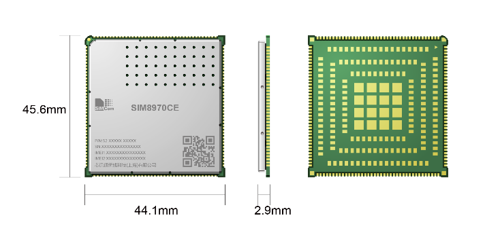
Unique advantages
4-lane MIPI_ DSI, supports high-definition display FHD 2520 * 1080 @ 60fps, supports DP interface display Supports 3 or 4 cameras, up to 25MP pixels Support for MIPI_ DSI and DP over USB Type-C for dual screen display Supports Wi Fi/BT Fully covering various network formats Integrated GNSS function to meet fast and accurate positioning in different environments support 4K@30fps Video recording and playback
Application
Smart POS, advertising media, automotive electronics, smart healthcare, smart security and other equipment and industries
Prospect
In the era of digital economy, technologies such as 5G communication and AIoT are also accelerating their integration while developing. With the rise of 5G+AIoT technology and the launch of ChatGPT, the popularization application area of artificial smart products is gradually expanding, and the market demand for smart products is also constantly increasing. At the same time, the smart communication modules have also become a trend, deepening and expanding into various application fields.
Shanghai Analogy Semiconductor Technology Ltd.
Product: Automotive-grade Dual-channel Intelligent High-side Switch HD70152Q
Description
HD70152Q is an automotive-grade dual-channel intelligent high-side switch. Its input control pins are compatible with 3V and 5V CMOS interfaces, and it is equipped with two independent output channels. The HD70152Q is widely used in automotive 12V grounded load applications, which can further provide intelligent protection and diagnostic functions. HD70152Q integrates advanced protection functions, including load over-current limit protection, relative over-temperature protection, and over-temperature shutdown protection with configurable latch function. The pin of HD70152Q can control the output automatic recovery or output blocking when a fault occurs. In addition, HD70152Q can survive of abnormal application scenarios like reverse battery and loss of ground. HD70152Q internally integrates a dedicated multi-function multiplexing analog output pin CS, which can provide complex diagnostic functions, including high-precision proportional load current detection, output overload, ground short-circuit alarm, VCC short-circuit diagnosis and OFF state open circuit diagnosis. The maximum standby current of HD70152Q is only 0.01uA. The input SEn pin is the detection enable pin of HD70152Q, which can further disable the diagnostic function in the OFF state to obtain lower power consumption. In addition, in the scenario where multiple HD70152Qs are used in the same system, in addition to saving power consumption, SEn can also realize that multiple HD70152Qs only need one ADC sampling channel and one CS resistance to ground, which greatly optimizes the system implementation cost.
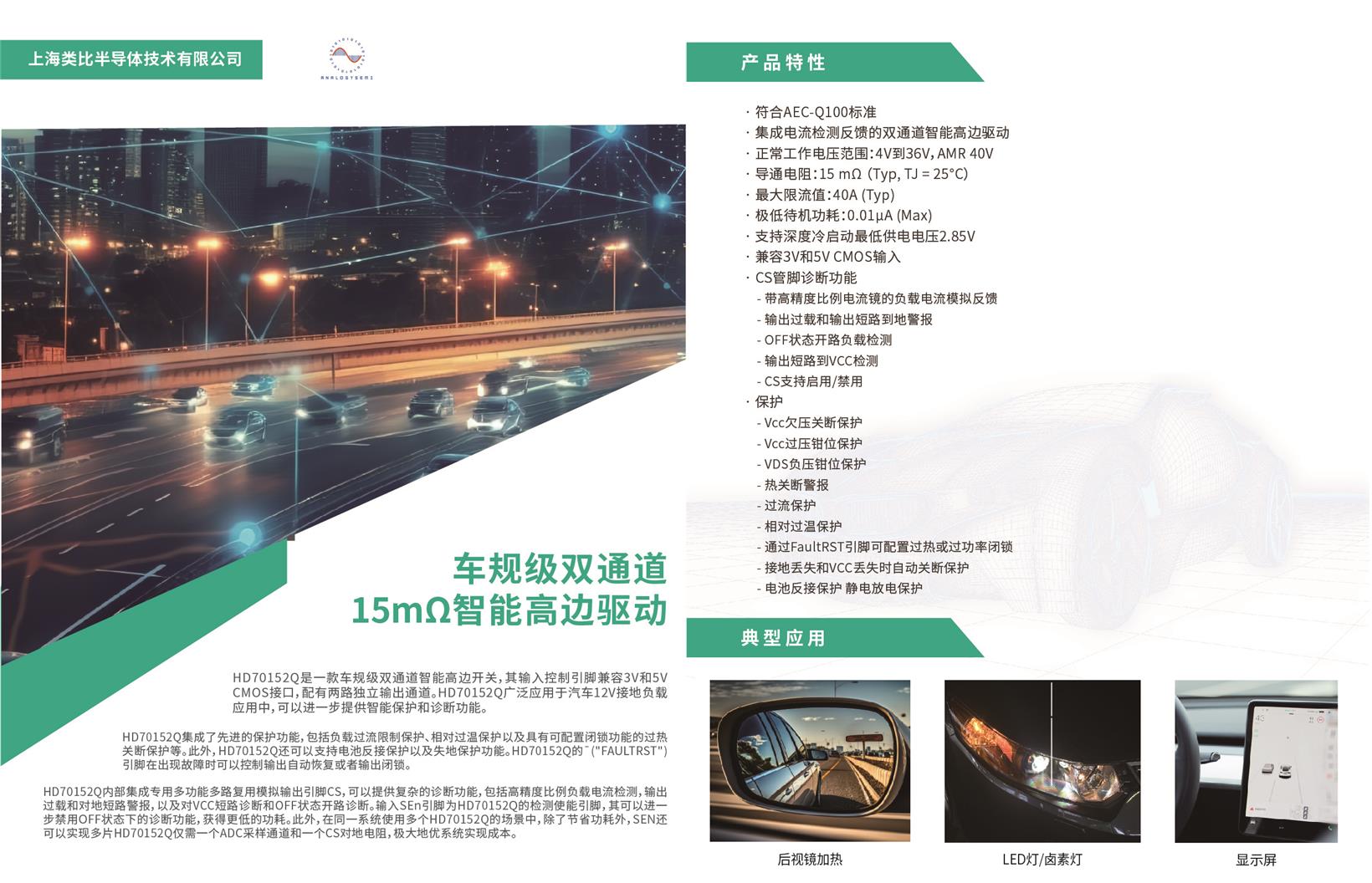
Unique advantages
By adopting innovative circuit and package designs, this part solves the problem of strict control of supply voltage, temperature and power consumption that are required in automotive applications.
Application
Implement in the body control system to drive the resistive load like the ambient light, Taillight, turn light, reversing light. Inductive load like the heating coil, cable, latch and electro valve. Capacitive load like power distribution and the halogen lamp.
Prospect
With the quick high-speed development of the automotive electronization, the traditional relay solution is taken placed by the electrical high side driver gradually in the every components in automotive. There are 50~100 channel of the high side driver required in a care in average, which is dominated by the western company with the lower localization rate, particular in the high side driver with the higher power. So, for the local semiconductor brand, there will be a huge space for local semiconductor to develop no matter in the incremental market of the new-energy automotive and the existing stock market dominated by the western semiconductor.
Shenzhen Longsys Electronics Co., Ltd.
Description
Compatible with mainstream platforms, it supports low-density parity-check code (LDPC) algorithms, Write Booster, HPB, emergency power failure protection, field firmware updates (FFUs), free block acceleration (FBA), and other features. It also boasts high reliability and long durability that can ensure around-the-clock operations of devices for extended periods.
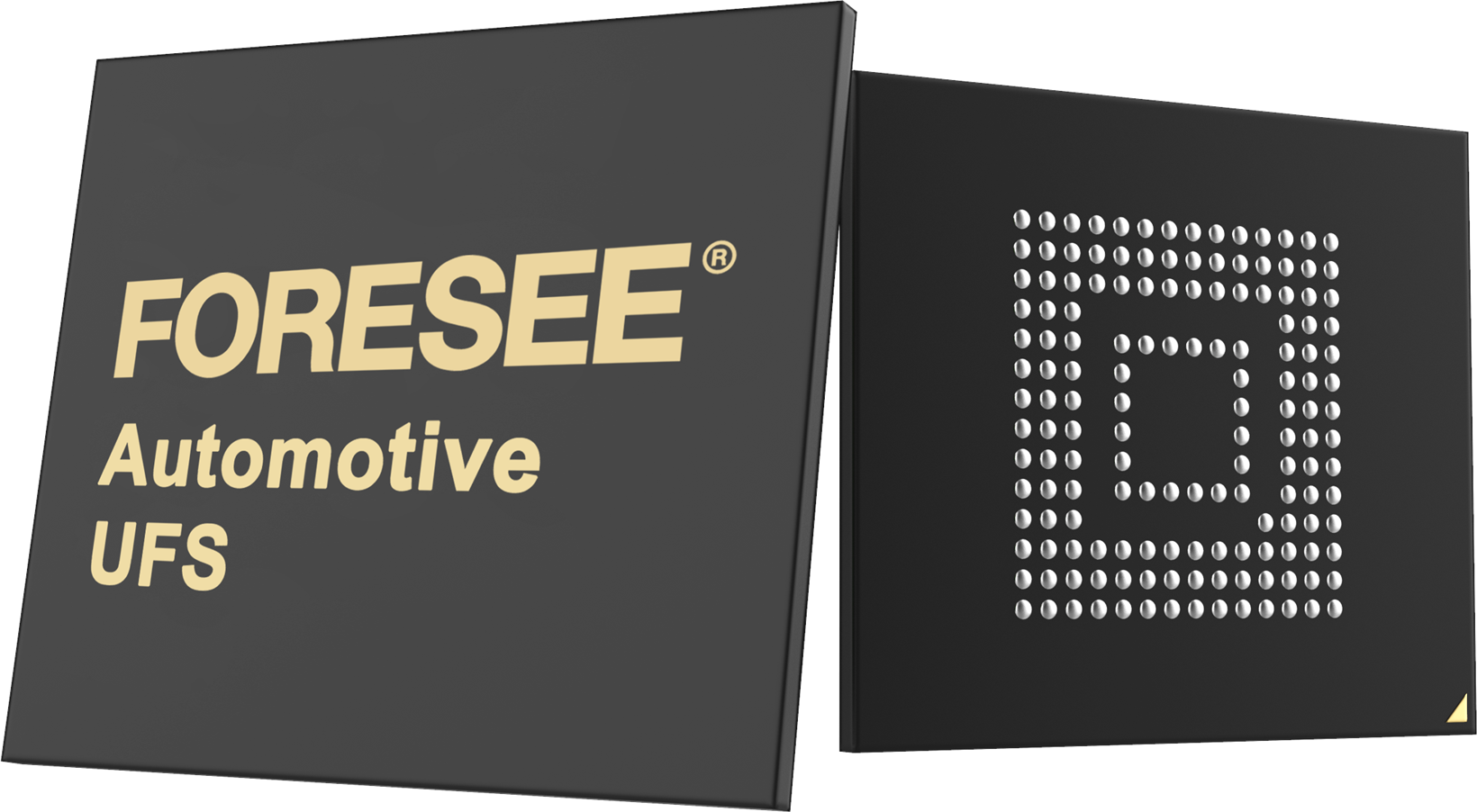
Unique advantages
Surpassing eMMC in performance, automotive UFS is really easy to use. FORESEE automotive UFS products adopt manufacturers' automotive resources and high-quality components along with Longsys' in-house firmware algorithms. In addition, the automotive UFS products have all undergone rigorous reliability standard qualification tests to ensure their long-term, stable, and reliable operation in the temperature range between -40°C and 105°C while ensuring data security. FORESEE automotive UFS with AEC-Q100 qualified is equivalent to gaining a "ticket" into an automotive.
Application
intelligent driving system, car multimedia entertainment, dash cam, streaming rear-view mirror
Prospect
FORESEE automotive UFS 2.1 can meet the basic needs of customers to iterate from eMMC to UFS. FORESEE automotive UFS 3.1 (128GB / 256GB) will have breakthrough growth in read and write performance, and power consumption and latency will be further reduced.
Arbe Robotics Ltd
Product: Lynx and Phoenix Perception Radar Provide 360° Surround Coverage
Description
Arbe’s surround imaging radar, Lynx, processes 24x12 channels and is the only long-range, high resolution, 360° sensing, affordable solution available on the market today. Lynx Imaging Radar was designed to complement Arbe’s flagship product, Phoenix Perception Radar, which processes 48x48 channels. Both radars will work in sync to deliver unified perception and interference avoidance. Together, Phoenix combined with Lynx, provide full sensor coverage around the vehicle, addressing the different requirements in each position to enable unparalleled safety to autonomous vehicles.

Unique advantages
Design: Phoenix optimizes use of space, power consumption, and cost without compromising on safety, and is delivered in a form factor designed to perfectly fit automakers’ current sizing and vehicle mounting specifications. While other sensors require that a multitude of components be attached to the top and sides of the vehicle, ruining the vehicle’s aesthetics, Phoenix is easily integrated in the space designed for basic radar units already in vehicles today, concealed behind the grill or in headlights. Lynx is designed to be a corner and a back radar for L2+ and higher autonomous vehicles. To achieve true safety and autonomy, L2+ vehicles will require four to six surround imaging radars per vehicle, integrated on top of one or two perception radars. In addition, Lynx can be utilized as a front radar for driver assist systems (ADAS), a new industry vertical for imaging radars, comprising a vast number of vehicles. Several Tier 1s already implement Arbe-based Surround Imaging Radars to offer OEMs a complete 360° solution that is future-proofed and ready for the next generation of perception requirements. Innovation: The combination of Lynx and Phoenix provides high-resolution, long-range 360° surround sensing of the vehicle, which is an industry first. Innovative aspects of the solution, include: Lynx and Phoenix together, resolve a sensor gap for surround installations - by providing a solution to challenging lighting and weather conditions which limit cameras and LiDARs, who also lack the needed long range. Lynx Imaging Radar - a reliable and affordable sensor providing both redundancy and the data diversity critical for safety and rolling out autonomous functionality. Lynx delivers effective sensing in all environment conditions, and gathers the data that optical sensors lack, like velocity, long range, depth perception, and more. By introducing ultra-high-resolution imaging, Phoenix is the first automotive perception radar to accurately detect stationary objects, making it also the first to meet NHTSA and NCAP requirements, and eliminating a significant cause of autonomous vehicle accidents. Phoenix is the first radar technology detailed enough to enhance perception algorithms, differentiating between static and dynamic objects, allowing continuous tracking of objects outside the line of sight, and predicting future movement direction by using objects’ trajectory. Phoenix is the only Imaging Radar with high resolution in all three dimensions at long range and in all environmental conditions, making it a mandatory sensor suite component to map free space in real time.
Application
Arbe’s 4D Imaging Radar Solution can be applicable to an array of dynamic and static applications. In dynamic applications, 4D Imaging Radar offers enhanced availability and accuracy for safety and kinematic-based functions, making it the ideal solution for every environmental scenario and geographic terrain. Arbe radar is fully customizable, scaling to meet the real-road needs of ADAS to fully autonomous vehicles. In static applications, 4D Imaging Radar offers enhanced personal safety and zone protection, traffic flow optimization, and adaptive decision making. Arbe radar is fully operated in all weather and lighting conditions as well as in heavy traffic, enabling surveillance systems to accurately pinpoint potential threats within predefined areas or zones when it matters most, without invading personal privacy.
Prospect
Open to OEM algorithm in the future, Arbe’s radar solutions are designed to enable perception to evolve, and to power the rollout of software—defined features for existing and new customers without the need for additional hardware throughout the vehicle lifecycle. A critical sensor for L2+ and higher autonomy, Arbe solutions will continue to provide full sensing coverage around the vehicle and will deliver advanced sensing and paradigm-changing perception to a wide range of vehicles and applications.
Giesecke+Devrient
Description
G+D's SE ensure the security of Vehicle-to-everything applications and prevent vehicles from being hacked and hollowed out. At present, they have been widely used in TBOX, gateways, digital key controllers and smart cabins.
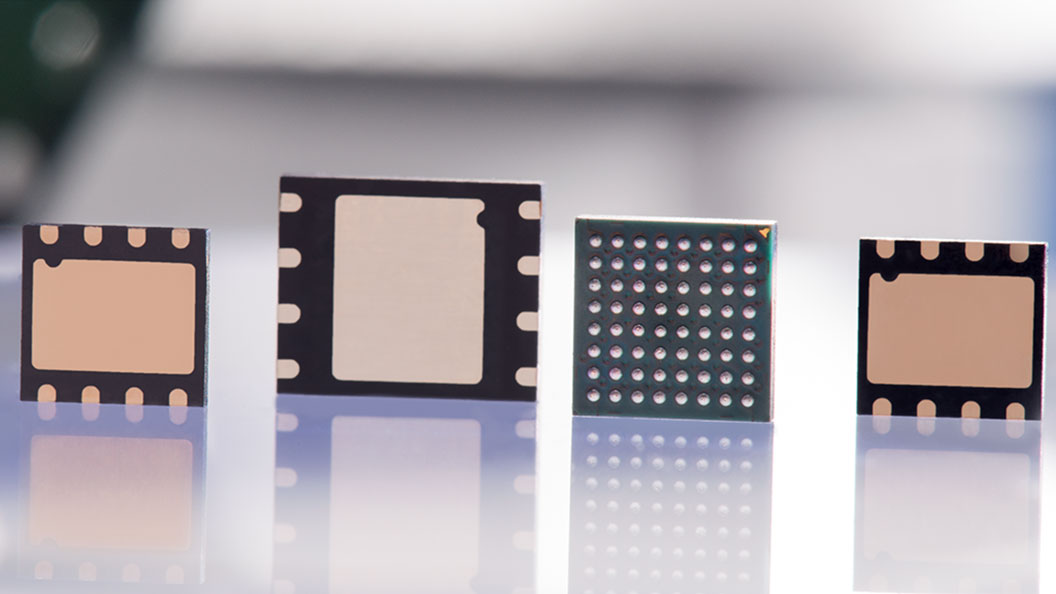
Unique advantages
GDCI3310 is a non-ARM architecture structure with domestic independent intellectual property rights. Through OSCCA2 level authentication, the algorithm supports both international and OSCCA algorithms, and is a 2-way SPI communication interface that can be connected to two MCUs, providing independent cryptographic algorithm capabilities.
Application
Digital Key, Secure Communication in Car and between Car and Cloud, Secure Storage, IP protection, System Security, OTA Security, V2X Security
Prospect
With the increasing demand for domestically produced chips in the automotive industry, G+D'SE can support multiple industry standards. Cooperating with SE, G+D'SE Socket connects the MCU development board with SE, and Tier1 and the car factory can develop and debug SE on the development board. Shorten the enterprise development cycle and improve efficiency. The G+D's SE OTA tool can enable remote debugging and updating of SE Applets during the development phase, helping enterprises solve problems remotely.
YEESTOR Microelectronics Co., Ltd.
Product: Highly Reliable Automotive Grade eMMC
Description
SiliconGo, YEESTOR's brand of industrial solid state storage solutions, has launched a variety of automotive-grade eMMC. The products support eMMC 5.1 data transfer mode, have excellent read/write performance and fast response speed, have been validated by the International Society of Automotive Electronics AEC-Q100 Grade 2 automotive test, and can ensure stable operation under extreme scenarios from -40°C to +105°C. They offer a variety of capacity options, including 4GB/8GB/16GB/32GB/64GB/128GB. It can ensure stable operation in extreme scenarios from -40°C to +105°C. It offers a wide range of capacity options of 4GB/8GB/16GB/32GB/64GB/128GB to meet customers' different storage needs. YEESTOR's automotive-grade eMMC has entered Dongfeng Motor and has docked and cooperated with a number of domestic OEMs and Tier1 manufacturers, and can be applied to automotive front-loading systems, including automotive digital instrumentation, T-Box, ADAS, smart cockpit, in-vehicle infotainment systems, event recorders, and other systems, making it an ideal choice for automotive applications.
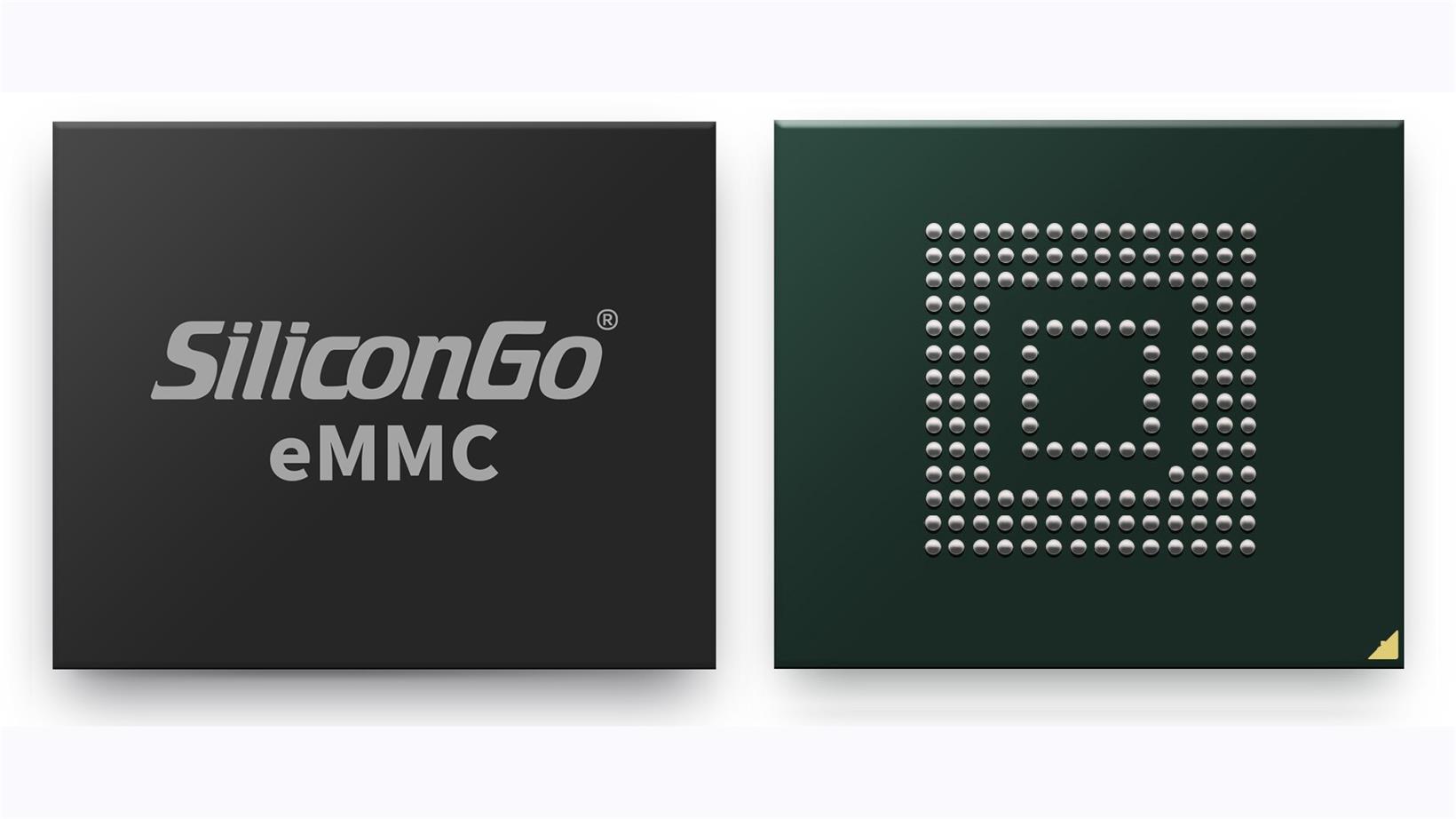
Unique advantages
YEESTOR's automotive-grade eMMC are designed, tested and verified in strict compliance with JEDEC specifications, and reliability tests such as high and low temperature aging, high and low temperature storage, data reading interference test, temperature cycling, endurance test and so on have been conducted in strict accordance with the requirements of AEC-Q100, to ensure the long-term stability and quality requirements of automotive customers. As for the controller, YEESTOR's automotive-grade eMMC is equipped with self-developed eMMC controller with fully independent intellectual property rights, which can provide end-to-end data protection. Equipped with a high-performance error correction engine, it realizes high performance and low power consumption, which can effectively prolong the service life of the eMMC and improve its stability. As the only enterprise in mainland China that has the capability of self-developed automotive-grade eMMC controller and is capable of mass production of automotive-grade eMMC, YEESTOR has core technologies covering various key technology areas of the storage control area, and has years of profound accumulation in the design of storage controller and storage solutions, which allows it to carry out targeted optimization processing of customized requirements for customer application scenarios. YEESTOR's R&D team from chip design to firmware and system development as well as local technical support team can provide timely and effective customer support and services. Through the in-depth understanding of the automotive field and storage needs, to meet the full range of customization needs of different customers, to create a truly automotive customers in line with the needs of the storage solution.
Application
Ideal for automotive front-loading systems including digital instrumentation, T-Box, ADAS, smart cockpit, in-vehicle infotainment systems, event recorders and other systems in automobiles.
Prospect
The automotive chip field has become the next incremental market in the semiconductor industry, according to BlueWeave Consulting data, the global automotive memory chip market size of about 3.475 billion U.S. dollars in 2021, with the increase in the penetration rate of high-level intelligent driving, the automotive storage market size is expected to be significantly increased, and it is expected that the market is expected to be increased at a CAGR of 24% to 2025 The market is expected to increase at a compound growth rate of 24% to about 8.2 billion U.S. dollars by 2025. The continuous improvement of automobile intelligence level, as well as the continuous expansion of on-board memory and storage capacity, the application of automotive eMMC is relatively fast, and it has become the largest storage product in the current automotive market. According to the "2022 Automotive Memory Chip Industry Research Report" published by JOS Automotive, China's automotive storage market size will be about US$700 million in 2021, and is estimated to grow significantly to US$1.5 billion in 2023. 2022 China's new energy vehicle shipments exceeded 6 million, and is expected to break through to 9 million in 2023. The rapid development of China's new energy vehicles and smart cars, the increased demand for eMMC storage capacity and performance from applications such as automotive dashboards, entertainment systems, ADAS, autonomous driving, and shop floor connectivity, as well as the new automotive policy starting in 2022, which requires that newly-produced passenger cars be mandatorily equipped with an EDR system, will further boost demand for eMMCs, resulting in a huge market outlook.
Gasgoo not only offers timely news and profound insight about China auto industry, but also help with business connection and expansion for suppliers and purchasers via multiple channels and methods. Buyer service:buyer-support@gasgoo.comSeller Service:seller-support@gasgoo.com







